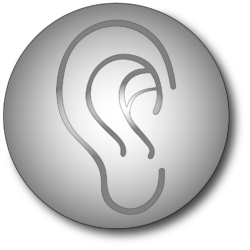Acoustics is a complicated science that doesn’t get any easier with all the difficult terms and concepts. The first step in finding a solution to acoustic problems is to be able to define what the problem is. All too often, different types of acoustic concepts are mixed up, whereupon incorrect judgments are made. Many times this leads to the acoustics measure failing or, in the worst case, worsening the initial situation.
Step sound
The problem is due to noise from your steps that, for example, the neighbor hears when you walk. The step sound level should be as low as possible. Footstep sound attenuation is a measure of how much the footstep sound is reduced with different floor coverings on thin homogeneous concrete joists. Step sound attenuation should be as high as possible.

Drum sound
That’s the problem with the sound of your steps that you hear yourself while walking. There is currently no standardized method for measuring drum sound, but that does not prevent valuable comparative tests being made between different floor types, using engineering methods. The drum sound problem is common with hard floor coverings.

Air sound insulation
Airborne noise is sound that is produced directly into the air, for example from stereo systems. Air sound insulation is a difference in sound level between two rooms where the sound level in one room is created by, for example, a speaker or speech. Air sound insulation is usually included in sound requirements classified from class A to class D. The higher the value of the air sound insulation, the better.

Sound absorption
Sound absorption is a measure of how much of the sound is incident on a non-reflecting surface. In general, for example, textile surfaces can provide a good addition to a room’s absorption, but only at high frequencies. Absorption can also be achieved with dense surface layers due to resonance between surface layer and substrate. Although measurements of sound absorption can be used to compare different products, it is the absolute amount of absorption that primarily counts.

Flank transmission
When the airborne sound insulation between two rooms is impaired by a sound path other than the separating wall, it is said to have flank transmission. An example of this is when you put up a plaster wall on a concrete floor. Then a certain part of the sound on one side will go down into the concrete floor, the entire concrete slab will start to vibrate, and thereby the sound will come up through the concrete floor on the other side of the wall.

Parquet resonance
Parquet resonance is an expression to describe the deterioration of the sound insulation that often occurs between the parquet floor and its substrate. In many cases, this resonance can greatly impair air sound insulation. Unfortunately, this phenomenon often occurs in the speech range of the light spectrum, which makes one experience the deterioration even more clearly. In the worst case, the parquet resonance can mean that you can hear the neighbor’s speech very clearly. The problem is common with thin parquet floors on concrete joists.

Subjective evaluation
This is anything but a standardized method one is extremely important. Regardless of how good a measured test value shows, however, it is always the experience of the acoustics that counts in the end. For example, via listening tests, people can perform a blind test to compare drum sounds from walking on different surfaces, in order to give a sound quality rating on the test object.






